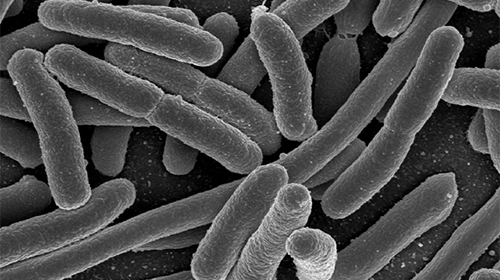Antibiotics are commonly ineffective against chronic, hard-to-treat infections caused by bacteria that are present at very high densities. Studies by researchers at the Massachusetts Institute of Technology (MIT) have now suggested why these overcrowded pathogenic organisms become tolerant to treatment and demonstrate how feeding the bacteria with extra nutrients to stimulate respiratory metabolism renders them more vulnerable to quinolone drugs.
“Given that the number of new antibiotics being developed is diminishing, we face challenges in treating these infections,” comments James J. Collins, Ph.D., the Termeer Professor of Medical Engineering and Science in MIT's Institute for Medical Engineering & Science (IMES) and department of biological engineering. “So efforts such as this could enable us to expand the efficacy of existing antibiotics.”
The researchers report on their findings in Molecular Cell, in a paper entitled “Understanding and Sensitizing Density-Dependent Persistence to Quinolone Antibiotics.”
In contrast with bacterial drug-resistance mechanisms, which are based on genetic mutations, drug tolerance in bacteria occurs when the organisms enter a physiological state that allows them to evade the drug’s actions. “Tolerance is not well understood, and we don’t have the means to circumvent it or overcome it,” Prof. Collins says. Prior work by the MIT researchers had demonstrated that they could improve the activity of aminoglycoside antibiotics against drug-tolerant bacteria by giving the organisms glucose to boost their metabolism.
Aminoglycosides are not widely used, however, because they can cause serious side effects, so the team has now focused on using a similar approach to reduce bacterial tolerance to the more widely used quinolone class of antibiotics. They found that in this case it was necessary to combine the antibiotic ciprofloxacin with fumarate, which acts as a terminal electron acceptor for cellular respiration, as well as glucose as a sugar source. In laboratory tests, this triple combination was highly effective at eliminating a range of high-density, drug-tolerant species, including Pseudomonas aeruginosa, which is found in the lungs of cystic fibrosis patients, Staphylococcus aureus, and Mycobacterium smegmatis, which is related to the bacterium that causes tuberculosis. “If you simply add a carbon source like glucose, that's not enough to enable the quinolone to kill,” Collins notes. “If you simply add oxygen, or another terminal electron acceptor, that by itself is not enough to cause killing either. But if you combine the two, you can eradicate the tolerant infection,” Collins says.
The results indicate that when high-density bacterial infections use up all the available nutrients and oxygen in their environment, they enter a starvation state and shut down metabolic processes, including the pathways that quinolone antibiotics would trigger to cause cell death. This metabolic shutdown acts as a survival mechanism for when nutrients are scarce, but also renders the bacteria tolerant to therapy. Adding nutrients that boost cellular respiration means the bacteria don't have to enter the starvation state, and so the antibiotics also remain effective. “Supplementation of stationary-phase cultures with glucose and a suitable terminal electron acceptor to stimulate respiratory metabolism is sufficient to sensitize cells to quinolone killing,” the authors conclude.
“This finding highlights that the metabolic state of the bug significantly influences how the antibiotic will impact the bug,” Collins comments. “And, for the antibiotic to be effective as a killing agent, it requires downstream cellular respiration as part of the process.
The researchers aim to test the approach in animal models, and they are investigating methods for delivering the combination therapy for treating different types of infection, including inhaled delivery to treat P. aeruginosa lung infections and topical treatments for some S. aureus infections.


